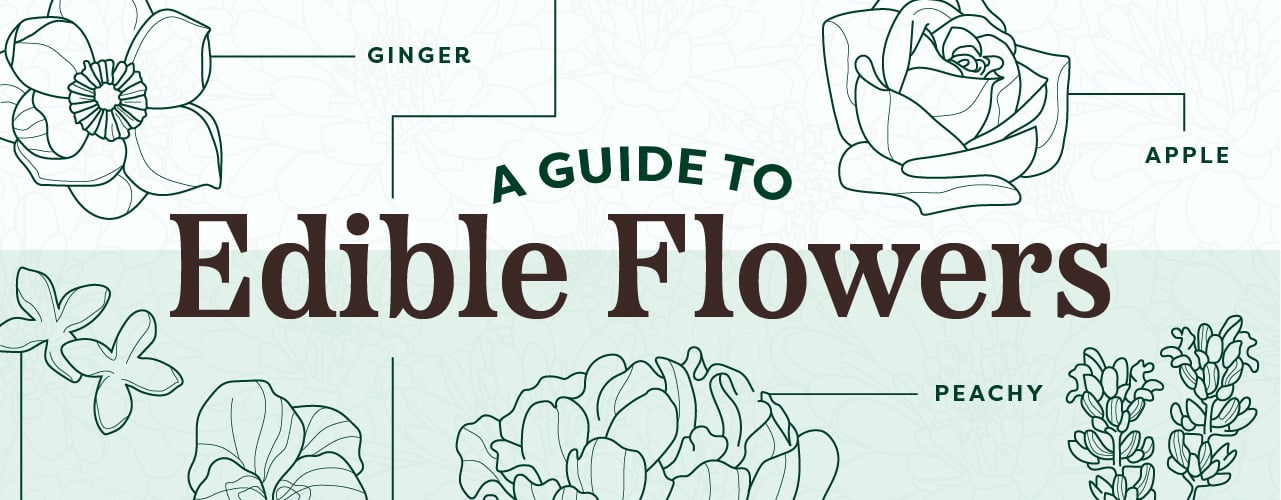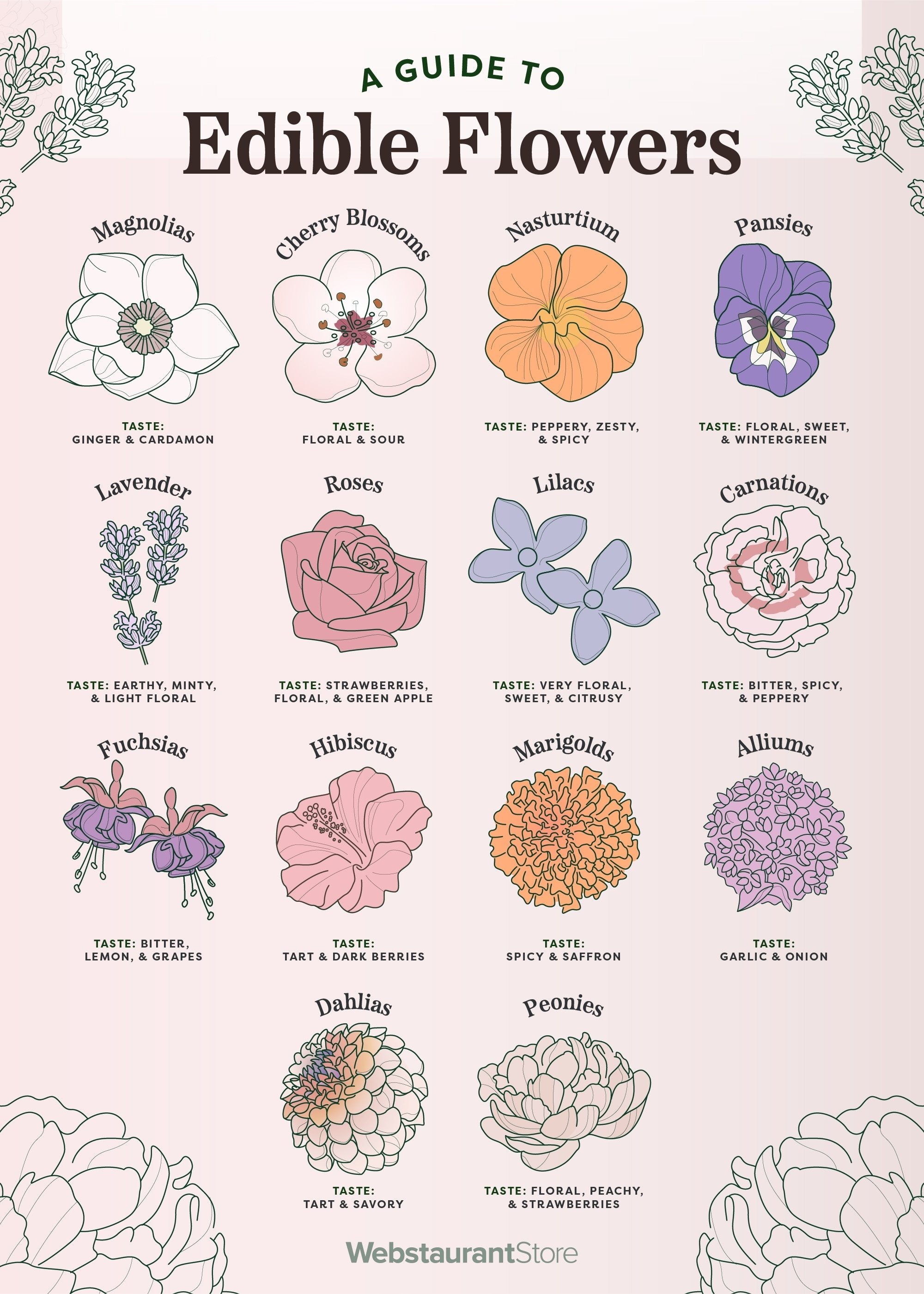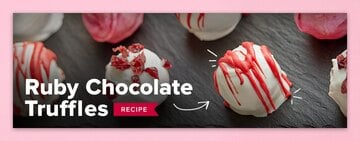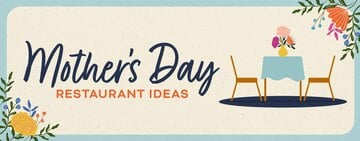What Flowers Are Edible?
When it comes to creating visually stunning and unique dishes, edible flowers are a popular choice among chefs and caterers looking to keep up with food trends. These blossoms not only add a pop of color to any plate but also bring a subtle and delicate flavor to the dish. From classic options like roses and pansies to more adventurous choices like marigolds and nasturtiums, there is a wide variety of edible flowers to choose from. We'll explore the different types of flowers that can be used in culinary applications, as well as provide tips on how to safely incorporate them into your menu.
Edible Flowers List
If you’re wondering which flowers are safe to eat, we’ve provided an edible flowers list with pictures below to help you pick out the right edible flowers for your dish, cocktail, or dessert:
1. Magnolias

Magnolia flowers are edible flowers that bloom into either a white, pink, yellow, green, or purple hue. They can take on a star shape or bowl shape. Only use the flower petals when cooking with magnolia flowers.
Magnolia flowers can be used as a raw garnish on a salad, infused into a syrup, and even pickled. Their stunning beauty is perfect to adorn a wedding cake, especially if the flower is in the main bouquet.
- What Does Magnolia Taste Like? Ginger, sharp cardamom notes
- Magnolia Flower Uses: Salad garnish, dessert garnish, cake decorations, pickled, infused in syrup
- Magnolia Blooming Season: Late March - mid-May
2. Cherry Blossoms (Sakura)
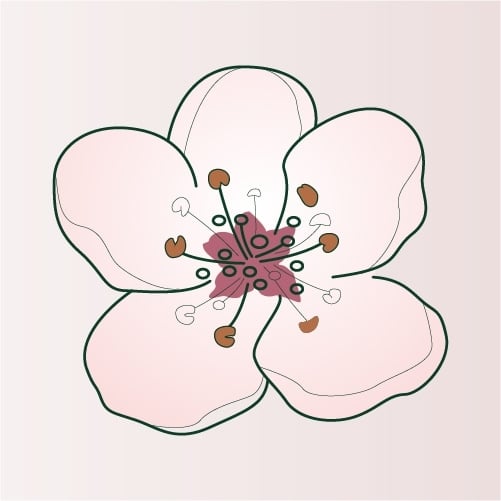
Cherry blossoms, also known as Sakura in Japan, are flowers that range in hue from light to dark pink, yellow, or white. They are pickled in salt and plum vinegar and then dried to become edible. Their beauty attracts viewers from all over the world to see their short blooming season in places like Japan, South Korea, Washington D.C., and parts of Europe.
Cherry blossoms are best for sweet applications, like in mochi, ice cream, sable cookies, infusing syrups, or decorating cakes. You can also preserve cherry blossoms to have them year-round for tea, crumbling onto rice or fish, or turning into sakura vinegar.
- What Does Cherry Blossom Taste Like? Sweet, subtly floral, slightly sour when heated
- Cherry Blossom Uses: Cake decorations, baked goods, ice cream
- Cherry Blossom Blooming Season: Late March - mid-April
3. Nasturtium
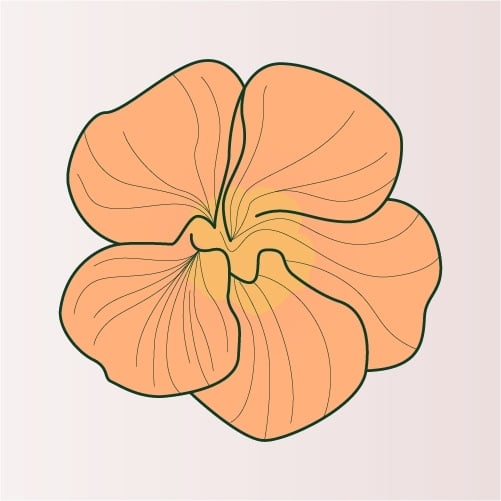
Nasturtium flowers are edible flowers that have a fiery red or orange hue and can sometimes be vibrant yellow or a soft yellow. Both the petals and leaves of the nasturtium flower can be eaten. They’re extremely easy to grow, making them a great addition to your menu.
Nasturtium uses can range from cooking applications to medicinal purposes. They tend to not be in sweet recipes as their flavor leans savory. Try using nasturtium flowers by steeping in vinegar or salad dressings, wrapping in spring rolls, or garnishing on pizza, pasta, and salads, like a grilled vegetable panzanella salad.
- What Does Nasturtium Taste Like? Peppery, zesty, and spicy, like radishes or mustard
- Nasturtium Uses: Garnishing salads, pastas, and spring rolls
- Nasturtium Blooming Season: May - September
4. Pansies
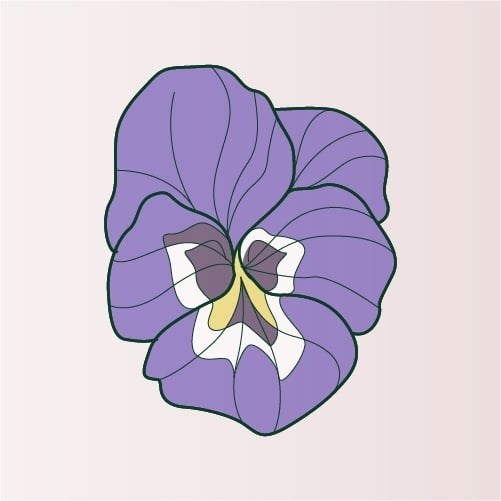
Pansy flowers, also known as pansies and Johnny Jump-Ups, are a type of edible flower that can range from dark to light purple, pink, yellow, white, and orange. They come in all different sizes and petal amounts.
Pansies are great for garnishing chocolate desserts, cocktails, salads, and vegetable dishes to add even more pops of vibrant colors. Pansies come from the greater violet flower family, so what you do with pansies can also be done for violets. Candied violets and pansies are especially popular in confectionaries, along with violet-infused syrups.
Violets can also be dried, then sprinkled and mixed into sugar or salt. More modern ways to use pansies and violets are by pressing them onto sugar cookies or rolling them into spring rolls.
- What Do Pansies Taste Like? Mild, slightly floral, and sweet, with wintergreen undertones
- Pansy Flower Uses: Garnish savory dishes, candied, pressed onto cookies
- Pansy Blooming Season: April - November
5. Lavender

Lavender flowers are one of the most popular edible flowers. They’re more frequently used in their dried form, but you can use fresh lavender as well in your cooking, baking, and cocktail-making.
Lavender can be used whole in cookies and scones, steeped into milk to make ice cream or pastry cream, infused in honey or a DIY simple syrup for cocktails and lemonades, decorating truffles or cupcakes, or mixed into sugar to create lavender sugar.
- What Does Lavender Taste Like? Earthy, minty, woody, and exquisitely floral
- Lavender Uses: Steeped in milk, infused in sweeteners, syrup for cocktails, decorating desserts
- Lavender Blooming Season: Late April - July
6. Roses
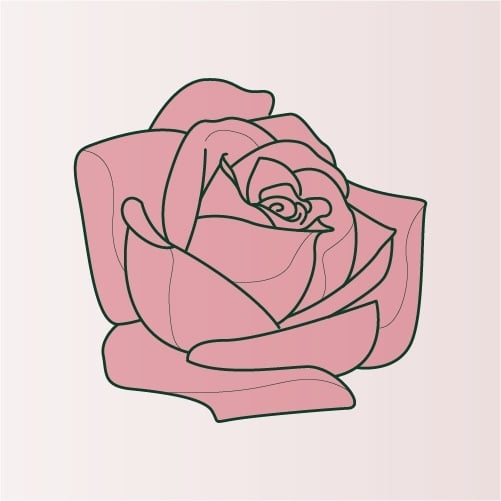
Rose flowers are a very common edible flower that ranges in hues from ruby red to various shades of pink, ivory, purple, yellow, and orange. Roses have been used for centuries for both edible cooking applications and beauty treatments.
Rose petals can be infused into honey or syrups for cocktails like this strawberry rose sangria. They are often candied to adorn the tops of truffles, cupcakes, and other desserts. You can also find rose petals steeped in milk for lattes or ice creams, made into tea, or made into a rose petal jam for a traditional paczki filling. Create a traditional Persian dish like a Persian love cake with this symbol of romance.
- What Do Roses Taste Like? Extremely floral, notes of strawberries and green apples
- Rose Petal Uses: Infused in sweeteners, candied for a garnish, steeped in milk or hot water
- Rose Blooming Season: Early May - late August
7. Lilacs

Lilacs are a beautiful edible flower that ranges in color from purple, pink, white, and blue. Lilacs are very easy to grow and are perfectly low maintenance if you’d like to have full control over your lilac flowers before using them in culinary applications.
Lilacs work especially well as garnishes for cakes, cupcakes, petit fours, and other desserts. Lilacs make a great addition to honey or can be cut up and tossed in sugar. Above all, lilacs are amazing in different spring or summertime beverages or frozen into ice cubes for a pop of color in even just a glass of lemonade or water.
- What Do Lilacs Taste Like? Very floral, subtle sweet and citrusy notes, bitter, astringent
- Lilac Uses: Garnishing desserts and cocktails, infused into sweeteners
- Lilac Blooming Season: April - June
8. Carnation Flowers
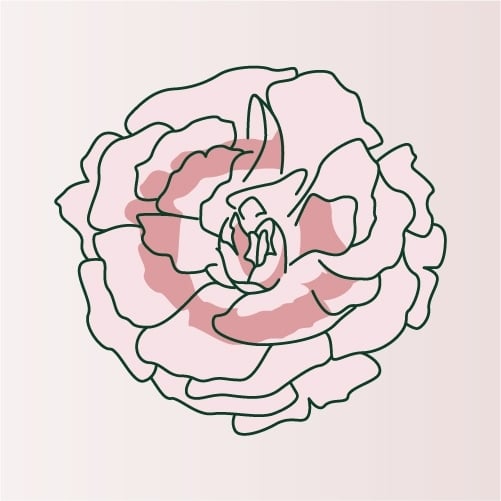
Carnation flowers are a type of edible flower that is both savory and sweet. Carnations can range in hues from pink, purple, yellow, green, red, and orange.
Carnation flowers make a beautiful addition to rice dishes, salads, or sauteed with vegetables or meats. Their interesting flavor also makes an incredible syrup-infused base for cocktails and ice creams. You can also crystalize carnations for a simple yet elegant dessert garnish.
- What Do Carnations Taste Like? Spicy, peppery, and bitter; Their mini versions are known to have a flavor similar to nutmeg and clove
- Carnation Uses: Cook with savory foods, garnish desserts, carnation simple syrup
- Carnation Blooming Season: May - September
9. Fuchsias
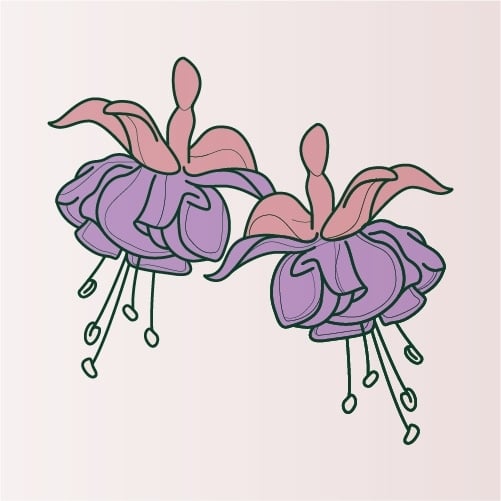
Fuchsia flowers are intricate and stunning flowers that can turn any dish or dessert into something to marvel at. Fuchsia flowers range in color from deep purple to stunning reds and crisp whites.
Because of their vibrant colors and elegant shape, fuchsia flowers are best used as a garnish for cocktails and cakes. Try using fuchsias on a burrata salad with fig and prosciutto to complement both the sweet and savory flavors.
Since fuchsia sometimes lends a berry-like flavor, you can use them in your next berry jam, or even something as simple as a scone recipe to add a kick of flavor and color.
- What Do Fuchsias Taste Like? Bitter, peppery flavor with lemon, pomegranates, and grape notes
- Fuchsia Flower Uses: Made into jam, garnish savory and sweet foods, baked into desserts
- Fuchsia Blooming Season: Mid-March - May
10. Hibiscus

Hibiscus flowers are edible flowers that are reminiscent of tropical climates and colors. Their hues range from different shades of pink, yellow, red, orange, and blue, and can either be solid in color or ombre.
Hibiscus is very common in its fresh and dry form and is used in non-caffeinated teas, grated and mixed into sugar to make hibiscus sugar, or infused into simple syrup to make a hibiscus syrup that’s great for cocktails or salad dressings. The fresh hibiscus flower makes an unbeatable garnish for tropical-flavored cakes that use passion fruit, pineapple, coconut, or mangoes.
- What Does Hibiscus Taste Like? Tart, berry-like flavor with cranberry and pomegranate notes
- Hibiscus Uses: Steeping in teas, infusing in sweeteners, garnishing cocktails and salads
- Hibiscus Blooming Season: Late July - mid-September
11. Marigold
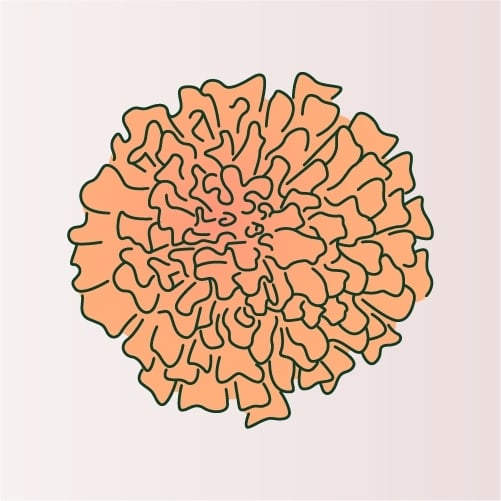
Marigolds are a vibrantly beautiful saffron hue that’s reminiscent of a richly colored sunset. Marigolds can be used for cooking applications in both their raw or cooked form and are present in many cuisines worldwide.
Try infusing marigolds into cooking oils to bring that saffron taste to almost anything, like stir-fries, pizzas, different curries, soup bases, or salad dressings. Since marigolds also have a beautiful color, they are stunning when arranged on cakes, plates of pasta, or salads.
- What Do Marigolds Taste Like? Slightly spicy uncooked; Saffron-like when cooked
- Marigold Uses: Infused in oil, garnish for savory or sweet foods
- Marigold Blooming Season: Late April - September
12. Allium Flowers
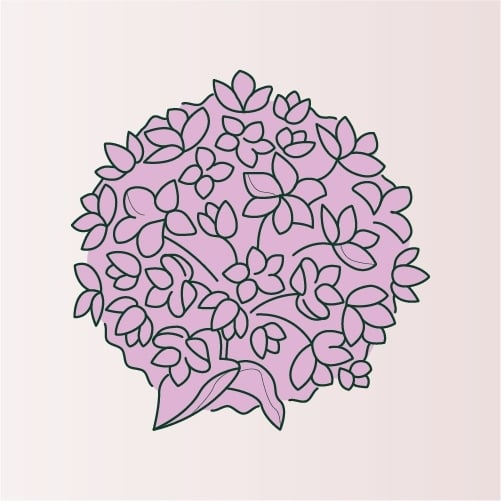
Allium flowers are different types of edible herb flowers from the onion family, such as leek, garlic, scallion, shallot, and chive. They have a beautiful, bulbous flower that ranges in color from deep purple to blue, yellow, and white.
Allium flowers are best used for dressing up savory dishes with a beautifully garnished flower, such as on salads, stir-fries, pasta, pizzas, and flatbreads, like on a chimichurri and steak flatbread recipe.
- What Do Allium Flowers Taste Like? Crisp and mild with subtle garlic and onion notes
- Allium Flower Uses: Garnish for savory meals
- Allium Blooming Season: May - June
13. Dahlias
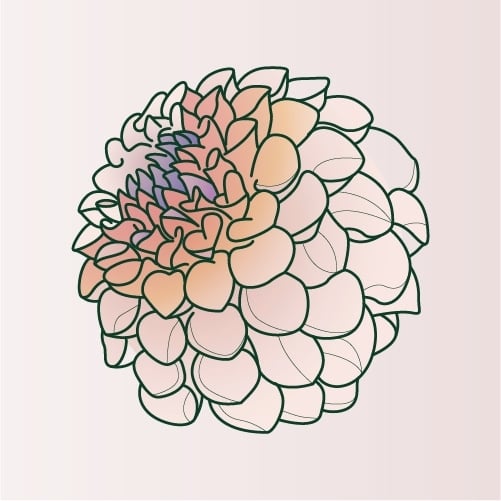
Dahlia flowers are a type of edible flower that grows into a bulb-like shape or a traditional flowering shape. Their petals oftentimes look like tight tubes, and their colors can range from all across the rainbow.
Dahlia flowers or their petals are best used as garnishes for a gorgeous presentation and flavor boost to savory dishes or arranged on top of a cake.
- What Do Dahlias Taste Like? Water chestnut, spicy apple, beetroot, celery, and carrot
- Dahlia Uses: Garnish savory dishes, decorate cakes
- Dahlia Blooming Season: July - September
14. Peonies

Although only thought of as decoration, peonies are edible flowers as well. Peonies can be on the more expensive side, but they create a show-stopping look in gardens and at weddings. Their hues range from baby pink, dark pink, pastel orange, and ivory.
Because peonies are such beautiful flowers, they are perfect in their raw form to adorn wedding cakes and desserts for an eye-catching display. Use them to garnish lemonades and cocktails like spritzers and mimosas for Mother's Day brunch. Once you’re done using your beautiful peony flower, turn the petals into a peony jam to slather on scones, English muffins, or toast.
- What Do Peonies Taste Like? Floral taste with peach and strawberry notes
- Peony Uses: Decorate cakes, garnish cocktails, make into jam
- Peony Blooming Season: Mid-May - late June
Ways to Use Edible Flowers
There are so many ways to use edible flowers in your cooking, baking, and decorating that the options are endless. Here are a few ways to use edible flowers:
- Dress up salads - A quick way to add color and even flavor to your salads is by adding edible flowers on top of a plated salad. Make sure to pick flowers that have complementing flavors to the rest of the ingredients in the salad.
- Garnish drinks - A great way to take your cocktails or mocktails to the next level is by adding the edible flower that’s used as the syrup in the drink.
- Make into teas - To make any edible flower into tea, take your edible flowers, place them into the bottom of your mug, pour boiling water over them, and let the flowers steep in the tea for 5-10 minutes. Discard the flowers and serve hot, or serve cold as a delicious iced tea recipe.
- Decorate desserts - Using fresh flowers to decorate cakes, French desserts, and smaller pastries is a masterful way to create stunning confections. Mix and match your edible flowers for a full bouquet look, or stick with one flower for a flower patch look. Take your pastry decoration to the next level by also including edible gold.
- Baked on cookies - Next time you make sugar cookies, gently press flowers onto them. After they’re rolled and cut out, brush egg whites onto the top of the cookies, cut the stem off your edible flowers, and roll them on top. Sprinkle some sugar over the cookies and bake to perfection.
- Steep in milk - Place milk into a sauce pot along with your edible flowers of choice. Bring the milk to a simmer, take it off the heat, and set aside. Let the flowers steep in the milk for 30 minutes, then remove the flowers. If your milk needs to be completely cooled before using it, place the milk in the refrigerator before using and after steeping for 30 minutes. Flower milk is perfect for making an array of frozen desserts.
- Infuse in syrups - Make a simple syrup by dissolving a 1:1 ratio of water and sugar in a saucepan. Remove from the heat, add your edible flowers, stir, and let the flowers steep into the sugar syrup for 30 minutes. Remove the flowers and use the simple syrup according to your recipe.
- Freeze in ice cubes - Probably the easiest way to incorporate edible flowers into a drink is by putting them into ice cubes. Fill your ice tray with water and add fresh, edible flowers into the compartments. This will add a pop of color to drinks and impart additional flavor when the ice melts.
How to Clean and Store Edible Flowers
After you’ve acquired your fresh edible flowers, you need to properly clean and store them before using them in recipes or as decor. Here is the proper way to clean and store edible flowers:
- Grab the flowers at the stem closest to the bud and gently shake the flower to remove any excess dirt or possible pests.
- Very carefully wash the flowers in either slowly running cold water or in a bowl of water.
- Line a tray with paper towels and gently place the flowers onto the paper towels to air dry.
- Use immediately, or line an airtight container with damp paper towels and store the edible flowers in the container for up to one week in the refrigerator.
Where to Buy Edible Flowers
Knowing where you’re buying edible flowers from is essential to the health and safety of your customers. You do not want to purchase flowers that have been sprayed with chemicals like pesticides, so it’s best to buy your edible flowers from the following places:
- Local farmer’s markets
- Produce section of the grocery store
- Online specialty food stores
Edible flowers not only add a visually appealing touch to dishes, but they also offer unique flavors and aromas. Incorporating edible flowers into menus can elevate the dining experience and provide customers with a memorable and delightful culinary adventure.
